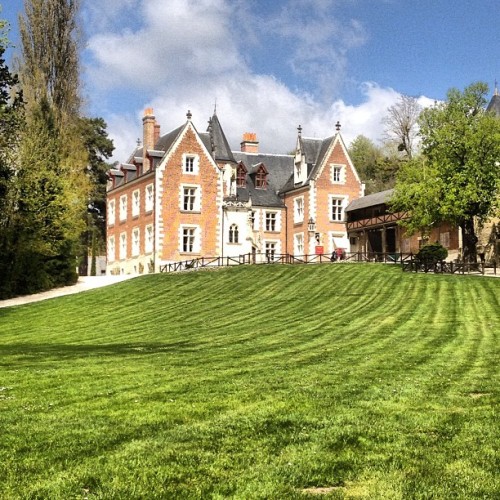The Geopolitics of the Yangtze River: Developing the Interior
As
the competitive advantage of low-cost, export-oriented manufacturing in
China's coastal industrial hubs wanes, Beijing will rely more heavily
on the cities along the western and central stretches of the Yangtze
River to drive the development of a supplemental industrial base
throughout the country's interior. Managing the migration of industrial
activity from the coast to the interior -- and the social, political and
economic strains that migration will create -- is a necessary
precondition for the Communist Party's long-term goal of rebalancing
toward a more stable and sustainable growth model based on higher
domestic consumption. In other words, it is critical to ensuring
long-term regime security.
The
concept of developing the interior is rooted in the dynastic struggle
to establish and maintain China as a unified power against internal
forces of regional competition and disintegration. Those forces arise
from and reflect a simple fact: China is in many ways as geographically,
culturally, ethnically and economically diverse as Europe. That
regional diversity, which breeds inequality and in turn competition,
makes unified China an inherently fragile entity. It must constantly
balance between the interests of the center and those of regions with
distinct and often contradictory economic and political interests.
Currently,
the Party's stated intent is eventually to achieve greater
socio-economic parity between coastal and inland regions, as well as
between cities and the rural hinterland. But Beijing also recognizes
that underlying broad categories like "inland," "central" and "western"
China is a complex patchwork of regional differences and inequality.
Mitigating these differences will require more varied and nuanced
policies.
Against
this backdrop, the central government has targeted the Yangtze River
economic corridor -- the urban industrial zones lining the Yangtze River
from Chongqing to Shanghai -- as a key area for investment, development
and urbanization in the coming years. Ultimately, the Party hopes to
transform the Yangtze's main 2,800-kilometer-long (1,700-mile-long)
navigable channel into a central superhighway for goods and people,
better connecting China's less developed interior provinces to the coast
and to each other by way of water -- a significantly cheaper form of
transport than road or railway. By positioning this "second coastline"
to become one of the nation's
new economic cores, Beijing seeks to build
what no previous dynasty could: a truly unified Chinese economy.
The Yangtze as a Core
The
Yangtze River is the key geographic, ecological, cultural and economic
feature of China. Stretching 6,418 kilometers from its source in the
Tibetan Plateau to its terminus in the East China Sea, the river both
divides and connects the country. To its north lie the wheat fields and
coal mines of the North China Plain and Loess Plateau, unified China's
traditional political cores. Along its banks and to the south are the
riverine wetlands and terraced mountain faces that historically supplied
China with rice, tea, cotton and timber. The river passes through the
highlands of the Yunnan-Guizhou Plateau, the fertile Sichuan Basin, the
lakes and marshes of the Middle Yangtze and on to the trade hubs of the
Yangtze River Delta. Its watershed touches 19 provinces and is central
to the economic life of more people than the populations of Russia and
the United States combined. The river's dozens of tributaries reach from
Xian, in the southern Shaanxi province, to northern Guangdong -- a
complex of capillaries without which China likely would never have
coalesced into a single political entity.
The
Yangtze, even more than the Yellow River, dictates the internal
constraints on and strategic imperatives of China's rulers. The Yellow
River may be the origin of the Han Chinese civilization, but on its own
it is far too weak to support the economic life of a great power. The
Yellow River is China's Hudson or Delaware. By contrast, the Yangtze is
China's Mississippi -- the river that enabled China to become an empire.
Just
as the Mississippi splits the United States into east and west, the
Yangtze divides China into its two most basic geopolitical units: north
and south. This division, more than any other, forms the basis of
Chinese political history and provides China's rulers with their most
fundamental strategic imperative: unity of the lands above and below the
river. Without both north and south, there is no China, only regional
powers. Only after the Qin captured the Yangtze's three primary regions
-- the Upper, Middle and Lower stretches -- in 221 B.C., thereby gaining
access to the southeast coast, did "China" as a single unit come into
being. In the two millennia since, the Yangtze has continued to mark the
boundary between kingdom and empire. The constant cycle between periods
of unity (when one power takes the lands north and south of the
Yangtze) and disunity (when that power breaks into its constituent
regional parts) constitutes Chinese political history.
If
the Yangtze did not exist, or if its route had veered downward into
South and Southeast Asia (like most of the rivers that begin on the
Tibetan Plateau), China would be an altogether different and much less
significant place. Its population would be much smaller, isolated to the
southeast coast, Loess Plateau and North China Plain -- the only parts
of Han China where economic life does not depend on the Yangtze. The
provinces of central China, which today produce more rice than all of
India, would be as barren as Central Asia. Regional commercial and
political power bases like the Yangtze River Delta or the Sichuan Basin
would never have emerged. The entire flow of Chinese history would be
different.
Three
regions in particular make up the bulk of the Yangtze River Basin: the
Upper (encompassing present-day Sichuan and Chongqing), Middle (Hubei,
Hunan and Jiangxi) and Lower Yangtze (Jiangsu and Zhejiang provinces, as
well as Shanghai and parts of Anhui). Geography and time have made
these regions into distinct and relatively autonomous units, each with
its own history, culture and language. Each region has its own hubs --
Chengdu and Chongqing for the Upper Yangtze; Wuhan, Changsha and
Nanchang for the Middle Yangtze; and Suzhou, Hangzhou and Shanghai for
the Lower Yangtze. Each region has its own internal market networks, and
each historically is more interested in protecting its autonomy and
prosperity than uniting under the north's control. Conquering and
integrating them from the outside therefore required not only
overwhelming military power -- historically, northern China's advantage
-- but also complex bureaucratic and internal security apparatuses.
Finally, it required a transport and communications infrastructure
comprehensive enough to make the exercise of central authority over vast
distances and diverse populations feasible.
Between
1949 and 1978, the Communist Party expanded those networks and laid
that infrastructure with brutal efficiency. In many ways, China was more
deeply united under Mao Zedong than under any emperor since Kangxi in
the 18th century. After 1978, the foundations of internal cohesion began
to shift and crack as the reform and opening process directed central
government attention and investment away from the interior (Mao's power
base) and toward the coast. Today, faced with the political and social
consequences of that process, the Party is once again working to
reintegrate and recentralize -- both in the sense of slowly
reconsolidating central government control over key sectors of the
economy and, more fundamentally, forcibly shifting the economy's
productive core inland. The first phase of this process will be driven
in large part by urbanization along the Yangtze River corridor,
especially in the provinces that make up China's traditional Upper and
Middle Yangtze regions.
Politics and Economy of the Yangtze
Today,
the Yangtze River is by far the world's busiest inland waterway for
freight transport. In 2011, more than 1.6 billion metric tons of goods
passed through it, representing 40 percent of the nation's total inland
waterborne cargo traffic and about 5 percent of all domestic goods
transport that year -- up 250 percent from 2004. Over the last decade,
dramatic increases in waterway freight traffic have been seen in some
provinces along the Yangtze River corridor, such as Anhui (840 percent,
to 364 million tons), Chongqing (640 percent, to 117 million tons) and
Hunan (500 percent, to 179 million tons). By 2011, the nine provincial
capitals that sit along the Yangtze and its major tributaries had a
combined gross domestic product of $1 trillion, up from $155 billion in
2001. That gives these cities a total wealth roughly comparable to the
gross domestic products of South Korea and Mexico.
This
growth, since roughly 2003, has been underpinned by a massive expansion
in centrally allocated fixed-asset investment into the interior, and
specifically to those parts of the interior Beijing considers most
viable as potential alternative or supplemental industrial bases to the
southeast coast. Unsurprisingly, areas with ready access to the Yangtze
River system have been targeted as cores of future inland urbanization.
In part, this is because cities like Chongqing and Wuhan already possess
well-developed urban industrial infrastructures, the legacy of Mao's
intensive focus on inland industrialization. This legacy in turn gives
these cities comparatively more influence and leverage than less
developed parts of the interior when it comes to extracting central
government financial support. Finally, cities along the Yangtze benefit
from geography: Transport by road is roughly 30-35 times more expensive
than transport by water, and rail is 3-3.5 times as expensive, meaning
that cities without direct access to the Yangtze are inherently less
viable as manufacturing and trade hubs.
Investment
in further industrial development along the Yangtze River reflects not
only an organic transformation in the structure of the Chinese economy
but also the intersection of complex political forces. First, there is a
clear shift in central government policy away from intensive focus on
coastal manufacturing at the expense of the interior (the dominant
approach throughout the 1990s and early 2000s) and toward better
integrating China's diverse regions into a coherent national economy.
But how that policy shift plays out on regional, provincial and local
levels is shaped less by dictates from Beijing than by the political
maneuvering of local and provincial governments for central government
favor. Access to navigable waterways enables the cities of the western
and central stretches of the Yangtze River to lobby more effectively for
credit and tax rebates that might otherwise have gone to less
competitive, landlocked provinces.
Investment
in the interior accelerated rapidly in the wake of the 2008-2009
financial crisis, when the sudden evaporation of external demand
revealed just how fragile and imbalanced China's economy had become.
Thirty years of export-oriented manufacturing centered in a handful of
coastal cities generated huge wealth and created hundreds of millions of
jobs. But it also created an economy characterized by deep
discrepancies in the geographic allocation of resources and by very
little internal cohesion. By 2001, the economies of Shanghai and
Shenzhen, for instance, were in many ways more connected to those of
Tokyo, Seoul and Los Angeles than of the hinterlands of Sichuan and
Shaanxi provinces. For most of the 1990s and 2000s, this lack of
cohesion was viewed as an unfortunate but necessary and temporary
byproduct of an economic model that was otherwise doing its job. After
the 2008-2009 financial crisis, internal economic disunity -- like the
growth model it embodied -- became a social and political liability.
The
foundation of this model was an unending supply of cheap labor. In the
1980s, such workers came primarily from the coast. In the 1990s, when
coastal labor pools had been largely exhausted, factories welcomed the
influx of migrants from the interior. Soon, labor came to replace coal,
iron ore and other raw materials as the interior's most important export
to coastal industrial hubs. By the mid-2000s, between 250 million and
300 million migrant workers had fled from provinces like Henan, Anhui
and Sichuan (where most people still lived on near-subsistence farming)
in search of work in coastal cities.
This
continual supply of cheap labor from the interior kept Chinese
manufacturing cost-competitive throughout the 2000s -- far longer than
if Chinese factories had only had the existing coastal labor pool to
rely on. But in doing so, it kept wages artificially low and, in turn,
systematically undermined the development of a domestic consumer base.
This was compounded by the fact that very little of the wealth generated
by coastal manufacturing went to the workers. Instead, it went to the
state in the form of savings deposits into state-owned banks, revenue
from taxes and land sales, or profits for the state-owned and
state-affiliated enterprises that controlled not only many of the major
coastal factories but also the various inputs that made manufacturing
possible: roads, rail and port construction; power generation; mining;
and oil and natural gas. (Notably, state-owned enterprises continue to
dominate heavy industrial manufacturing).
This
dual process -- accumulation of wealth by the state and systematic wage
repression in low-end coastal manufacturing -- significantly hampered
the development of China's domestic consumer base. But even more
troubling was the effect of labor migration, coupled with the relative
lack of central government attention to enhancing inland industry
throughout the 1990s and early 2000s, on the economies of interior
provinces.
Remittances
from the coast kept families in the interior alive and paid for
children of migrant workers to attend school, but they did little to
improve the overall vitality of inland provincial economies. As a
result, when the children of the first generation of migrant laborers
reached working age, many of them followed their parents to the coast,
where employment opportunities were far more abundant. However, unlike
their parents, who had families to care for back in Henan and Sichuan,
the new generation of migrants had far less incentive to one day return
inland, let alone send money back. With the possible exception of a
handful of inland cities (Hefei, Wuhan, Changsha and Chongqing, all of
which saw marginal to moderate population growth between 2001 and 2011),
the interior came to represent poverty and backwardness, a place to
abandon rather than to develop.
Beijing
has long understood that it will have to change that perception -- and
the economic and policy realities underlying it -- before it can hope to
address the growing structural imbalances of its current economic
model. But in China, this is easier said than done. In trying to
urbanize and industrialize the interior, Beijing is going against the
grain of Chinese history -- a multimillennia saga of failed attempts to
overcome the radical constraints of geography, population, food supply
and culture through ambitious central government development programs.
Though its efforts thus far have yielded notable successes, such as
rapid expansion of the country's railway system and soaring economic
growth rates among inland provinces, they have not yet addressed a
number of pivotal questions. Before it can move forward, Beijing must
address the reform of the hukou (or household registration) system and the continued reliance on centrally allocated investment, as opposed to consumption, as a driver of growth.
In
a sense, Wuhan is the heart of modern China. It is not the country's
most important economic or cultural hub, and aside from a brief stint in
the 1920s as the Nationalist Party government's capital, it has never
been China's official political center. But while Wuhan wields less heft
than Beijing, Shanghai or Chongqing, its location at the intersection
of the country's most important transport routes gives it a different
kind of strategic significance for the Communist Party.
Situated
at a bend in the Yangtze River near the geographic center of Han China,
Wuhan is a natural transportation crossroads. From west to east, it
binds the upper and lower stretches of the Yangtze together, serving as
the intermediary for goods passing between the Sichuan Basin -- western
China's industrial powerhouse -- and the Yangtze River Delta. From north
to south, it anchors the Beijing-Guangzhou railway, a
2,324-kilometer-long (1,444-mile-long) trunk line that gives China's
traditional political core, the North China Plain, direct access to the
prosperous but historically restive Guangdong province.
Just
as important as these national-level axes are the numerous
interprovincial infrastructure linkages that converge on Wuhan. These
roads, waterways and highways bring goods and people from inland
provincial capitals such as Xian, Changsha, Kunming and Zhengzhou down
to Wuhan's ports and, from there, on to Shanghai. The city serves to
integrate China's disparate geographic and economic macro-regions into
one coherent economic system and helps enable the central government to
enforce political control and social management over these regions.
Wuhan's Growing Significance
Beijing
increasingly recognizes Wuhan's importance in the evolving system of
infrastructure linkages and as a core from which to gradually expand
urbanization and industrial activity out into the rural hinterlands.
As
a result, Beijing has launched state-level policy initiatives such as
the "Rise of Central China" plan inaugurated in 2004 and the
Hubei-Jiangxi-Hunan "Central Triangle" development program, which seeks
to transform Wuhan, Changsha and Nanchang into one contiguous urban
conglomerate to complement the Yangtze River Delta. Through these
programs, Beijing has sought to build on Wuhan's inherent advantages --
its location roughly equidistant from both Chongqing and Shanghai; its
physical, historical and economic ties to nearby urban centers such as
Changsha and Jiujiang; an extremely high per capita distribution of
top-level universities and research institutes; and well-established and
influential steel and automaking industries, among others -- to frame
the city as both a driver and a model for future inland development.
These efforts are most obviously manifested in Wuhan's substantial
economic growth over the last decade.
Between
2001 and 2011, fixed asset investment into Wuhan (much of it centrally
allocated) rose nearly eightfold. Gross industrial output grew by 760
percent over the same period, while local government revenue grew by 680
percent and the city's gross regional product more than quadrupled. In
2011, 418 million tons of goods passed through Wuhan, an increase of
more than 255 million tons from a decade before. More freight passed
through Wuhan last year than any other inland city besides Chongqing.
(Notably, because Wuhan's population is one-third the size of
Chongqing's, its per capita freight traffic is actually almost 70
percent higher.) Its economy is now larger than those of Bangladesh,
Angola and Morocco. Alone, it contributes almost 35 percent of Hubei's
provincial gross domestic product despite housing only 17 percent of the
province's population.
Wuhan's
story over the past decade is one of unimpeded growth, rapid
infrastructure development (on Dec. 12, 2012, the city opened the
nation's first cross-Yangtze River subway, and it plans to have eight
metro lines in operation by 2017) and rising living standards (reported
per capita income in 2011 was 4.5 times greater than a decade before).
But this was not always the case. In fact, over the last half century,
the city has seen its fortunes rise and fall in lockstep with changes in
the national political and economic climate. For much of the past three
decades, as Deng Xiaoping's Reform and Opening process got under way,
local Party leaders in Wuhan have struggled against not only the natural
disadvantages facing all inland cities relative to coastal metropolises
but also against the direct and indirect burdens imposed by central
policies and provincial-level politicking.
A
closer look at Wuhan's history, ancient and modern, helps explain both
the particular dynamics of Wuhan's current "rise" as well as broader
elements in Chinese political and economic organization. Wuhan's many
iterations over the years reflect the extremely tight relationship
between politics and economy in China, and the ways in which policy --
whether at the central or provincial level -- has shaped and guided the
development of the Chinese economy throughout the Reform and Opening
period.
Wuhan and the Evolution of the Middle Yangtze Region
The
three cities that together constitute present-day Wuhan have existed in
some form for more than 3,500 years and have served as important
trading centers in central China since at least the sixth century B.C.,
when Hanyang (named, like its sister city, Hankou, after the Han River, a
major tributary that flows into the Yangtze at Wuhan) emerged as a
commercial hub in the prosperous and culturally sophisticated state of
Chu. By the third century, the area around Wuhan had become the region's
most important trading center. As the core of the Middle Yangtze
region, this area was highly sought after by the competing states of
Shu, Wu and Wei, which in 208-209 fought one of the most famous battles
in Chinese history, the Battle of Red Cliffs, in the hills outside
present-day Wuhan.
Over
the next 16 centuries, the Middle Yangtze geographic region -- bound to
the west by the outer wall of the Sichuan Basin, and to the south, east
and north by a patchwork of mountain ranges -- further coalesced into a
distinct and relatively independent political, economic and cultural
unit. In times of dynastic unity, the Middle Yangtze was loosely
subsumed under the center's control through bureaucratic and trade
links. In times of disunity, it broke off into its own would-be state.
Throughout, Wuhan remained the core around which the region's economic
life revolved. Though the Middle Yangtze at times served as a supplier
of raw materials (timber, cotton and grain) to the more advanced Yangtze
Delta region, it relied far more heavily on its own internal commercial
networks than on inter-regional trade. Like most parts of China before
the mid-20th century, the Middle Yangtze had far more to do with itself
-- economically and culturally -- than with other parts of the Chinese
Empire.
It
is critical to remember the degree to which geography imbued the
inhabitants and rulers of China's regions with a strong sense of
historical, cultural and political autonomy. As with the Middle Yangtze
region, that autonomy was often undergirded by economic reality. Until
recently, China has never had a truly unified economic system. Even
today, these deep-seated regional differences manifest in strong
competition between provinces for Beijing's "favor" -- government
investment and preferential tax policies -- and low levels of
interprovincial trade. In fact, though Beijing ultimately desires to
build a genuinely integrated national economy, it often utilizes its
ability, as the center, to exacerbate regional rivalries to solidify its
own political and economic influence. Wuhan's experience over the last
half century illustrates this strategy.
When
Mao Zedong came to power, he sought to reassert central control over
the economy by closing China to foreign trade. This entailed
transferring much of the budding industrial plant around China's major
international ports -- Shanghai and Guangzhou -- to inland provinces,
Mao's primary power base. Some of that industrial plant went northeast
in order to reinforce the region's role as a buffer against invasion via
the Korean Peninsula. Much of the rest went to central China, and
especially to Wuhan, which Mao quickly transformed into one of the
country's most important industrial bases (founding, in the process,
some of contemporary China's most powerful state-owned enterprises, such
as Wuhan Iron and Steel Co.). When Mao died, Wuhan ranked fourth among
Chinese cities in terms of fixed asset investment, industrial profits,
tax revenue contributions to the central government and gross industrial
output.

With
the onset of Deng Xiaoping's Reform and Opening process in the 1980s,
Wuhan's fortunes changed rapidly. By 1992, the city's gross regional
product had fallen to 11th out of 35 cities surveyed by the State
Statistical Bureau. Its gross industrial output fell to 13th over the
same period, and its average annual growth rate dropped to 8 percent,
below the national average of 8.7 percent and well under the 15-20
percent annual growth enjoyed by new coastal economic zones. In part,
Wuhan's relative decline reflects the natural disadvantages of China's
interior in a newly market-oriented system based on trade with the
outside world. Distance and geography made export-oriented manufacturing
in much of inland China economically unfeasible, especially given the
region's poor infrastructure links to the coast at the time.
But
in fact, Wuhan's shift in fortunes was affected, directly and
indirectly, by the central government's decision to open coastal Special
Economic Zones such as Shenzhen. These zones received enormous
government investment in transport and power infrastructure, retained
100 percent of their foreign exchange revenues (compared to 25 percent
for the rest of the country) and received significantly higher tax
remittances from Beijing. In turn, the extra tax burden was shifted to
cities like Wuhan, depressing local government revenue even as the
central government dramatically reduced fixed-asset investment into
interior China, thereby giving foreign investors even less incentive to
look inland. And while Beijing in 1985 did officially grant Wuhan the
economic powers of a province (meaning that Wuhan no longer paid taxes
to the Hubei government, but only to Beijing), it did so without also
implementing policies designed to attract foreign investment. In the
end, this hindered Wuhan more than it helped. Not only was the city
still unable to attract outside investment, but even its own provincial
government came to view Wuhan as a competitor. Because it no longer drew
tax revenue from Wuhan, Hubei worked instead to redirect resources and
trade that normally would have ended up in the city elsewhere.
New Imperatives, New Policy Outlook
Beijing's
policies in the 1950s grew from a strong need to reassert central
control and move industrial activity away from the vulnerable coastline.
As a result, cities such as Wuhan were prioritized and grew
accordingly. By contrast, the central government's policies in the 1980s
and 1990s grew from a need to attract the initial wave of foreign
capital that would eventually give the central government the means to
develop the rest of the country, even if it required temporarily
retarding economic growth in -- and in many ways actively undermining
the competitiveness of -- inland provinces. This need went hand in hand
with the economic model now widely associated with China: high growth
rates built on low-cost, export-oriented manufacturing clustered along
the coast. In turn, the interior suffered.
As
that model becomes economically, socially and politically untenable at a
time of rising wages and input costs and weak external demand, Beijing
is again working to reprioritize growth and investment into the
interior. As a result, cities such as Wuhan, Chongqing and Hefei (the
capital of Anhui province) have become sites for new Special Economic
Zones (such as Chongqing's Liangjiang New Area), high-tech and
industrial development zones (Wuhan's East Lake Zone and Anhui's "861
Plan" to develop eight new industries, including manufacturing) and
large-scale transport and port development. Between 2011 and 2020, the
central government plans to invest $28.6 billion to revamp Wuhan's port
network, giving it a throughput of 200 million metric tons and 2 million
20-foot equivalent units by 2015 -- up from 100 million metric tons and
650,000 20-foot equivalent units in 2012 -- and adding a further 40
million metric tons and 3 million 20-foot equivalent units of capacity
by 2020. In just the last two years, favorable central government
policies have helped Wuhan attract investment from firms such as
Honeywell ($60 million for a turbocharger factory), Ikea ($794 million
for a shopping center), Lenovo ($790 million for research and
development) and Shanghai General Motors ($1.1 billion).
The
story these new investments help tell is not only or primarily one of
natural economic cycles. Rather, Wuhan's ebbs and flows are a reflection
of broad shifts in the balance of political power within the Communist
Party, shifts in China's wider geopolitical environment and, ultimately,
Beijing's evolving efforts to cope with fundamental constraints and
achieve its strategic imperatives. Industrialization and urbanization of
the Yangtze River corridor, of which Wuhan is just one node, is not
simply an economic process, but rather one driven by a network of needs
and interests.
Beijing
pursues far-reaching development programs such as the industrialization
of the Yangtze River region not always because they make economic sense
-- often they do not -- but because it must do so to sustain the basic
social and economic structures that secure the regime. In the case of
Yangtze development, an official from China's National Development and
Reform Commission noted in May 2011 a shift in the focus of central
government port development policy from the coast to the interior,
adding that most of the opportunities for future port-related investment
would be in cities along the Yangtze River. According to a statement
earlier that year from the Ministry of Transport, as much as 200 billion
yuan ($32 billion) would be invested in inland waterway port expansion
during the 12th Five Year Plan (2011-2015), roughly double the amount
set aside between 2006 and 2010. Wuhan's 10-year port redevelopment
program is set to consume a large percentage of that investment -- at
$28.6 billion, the program accounts for around 70 percent of the
country's total ongoing and planned port construction -- though another
$4 billion to $5 billion has been set aside for dredging and port
expansion everywhere from Chongqing municipality in southwest China to
Wuhu in Anhui province.
The
central government's heightened emphasis on inland waterway port
expansion is incongruous with port throughput trends during the previous
five-year period, 2007-2011. Not surprisingly, China's coastal ports
dwarf inland ports in terms of both overall throughput and throughput
growth. But more telling is that of the major Yangtze ports for which
the National Bureau of Statistics provides freight traffic data, only
three (at Chongqing, Yueyang and Wuhu) showed significant growth in
throughput between 2007 and 2011. Wuhan, the flagship of new port
investment on the Yangtze as well as nationally, actually saw declines
in both the number of berths and freight throughput during that period.
The
apparent gap between central government policy prerogatives and the
reality of port traffic growth trends exemplifies the way economic
development policy under the Communist Party not only responds to
present needs but also in many ways actively shapes future realities. In
the case of Yangtze River port development, and especially the massive
expansion of Wuhan's port networks, it is difficult to differentiate
investment and construction to meet growing real demand from investment
to direct future attention and activity where it otherwise may not have
gone.
The
distinction is subtle but important because it points to the
fundamentally political nature of Yangtze River development efforts
(and, more generally, development of the Chinese interior). The politics
of inland development plays out on multiple levels, from granular
politicking among cities and provinces for central government favor to
the underlying forces and constraints that make processes like Yangtze
River economic development a social and political necessity for Beijing.
Going
forward, the question for Beijing will be whether and to what extent it
is able to realize its ambitious plans for the Yangtze River corridor
and inland China as a whole. Even then, it is not clear that expanding
and industrializing a handful of inland cities will reduce mounting
economic imbalances or social tensions unless combined with significant
changes to a range of other policies, including the hukou (or household registration) system
and the fiscal and financial relationship between city, provincial and
national governments. Significant changes to these policies will, in
turn, meet steep resistance from entrenched bureaucratic interests. More
fundamentally, such changes would likely unleash the social unrest that
Beijing's entire political economic system is intended to manage.
To
the extent that inland port development is important for China's social
and economic structures, port development in Wuhan is similar to
projects like the Three Gorges Dam or the ongoing South-North Water
Transfer Project, which seeks to divert up to 10 percent of the Yangtze
River's flow to water-starved provinces in northern China. All three are
attempts to reconcile immense geographic and environmental constraints
with the ballooning demands (both consumer and industrial) of an
enormous population and an ever-expanding economy -- all while providing
enough jobs to maintain a degree of stability.
The
problem, then, is not simply that the Chinese government's approach to
economic development is inconsistent with the needs of the economy and
population as a whole (though, depending on how those needs are defined,
it may be). Rather, it is that the needs of the economy -- growth with
stability, and energy security despite energy demands that far outstrip
domestic resources -- are themselves inconsistent and contradictory.
This by no means guarantees that Beijing's continual intervention in and
efforts to directly manage Chinese economy and society will succeed,
but it does help explain why the Communist Party -- and arguably, any
government that attempts to rule China today -- intervenes in the first
place.
As
the competitive advantage of low-cost, export-oriented manufacturing in
China's coastal industrial hubs wanes, Beijing will rely more heavily
on the cities along the western and central stretches of the Yangtze
River to drive the development of a supplemental industrial base
throughout the country's interior. Managing the migration of industrial
activity from the coast to the interior -- and the social, political and
economic strains that migration will create -- is a necessary
precondition for the Communist Party's long-term goal of rebalancing
toward a more stable and sustainable growth model based on higher
domestic consumption. In other words, it is critical to ensuring
long-term regime security.
The
concept of developing the interior is rooted in the dynastic struggle
to establish and maintain China as a unified power against internal
forces of regional competition and disintegration. Those forces arise
from and reflect a simple fact: China is in many ways as geographically,
culturally, ethnically and economically diverse as Europe. That
regional diversity, which breeds inequality and in turn competition,
makes unified China an inherently fragile entity. It must constantly
balance between the interests of the center and those of regions with
distinct and often contradictory economic and political interests.
Currently,
the Party's stated intent is eventually to achieve greater
socio-economic parity between coastal and inland regions, as well as
between cities and the rural hinterland. But Beijing also recognizes
that underlying broad categories like "inland," "central" and "western"
China is a complex patchwork of regional differences and inequality.
Mitigating these differences will require more varied and nuanced
policies.
Against
this backdrop, the central government has targeted the Yangtze River
economic corridor -- the urban industrial zones lining the Yangtze River
from Chongqing to Shanghai -- as a key area for investment, development
and urbanization in the coming years. Ultimately, the Party hopes to
transform the Yangtze's main 2,800-kilometer-long (1,700-mile-long)
navigable channel into a central superhighway for goods and people,
better connecting China's less developed interior provinces to the coast
and to each other by way of water -- a significantly cheaper form of
transport than road or railway. By positioning this "second coastline"
to become one of the nation's new economic cores, Beijing seeks to build
what no previous dynasty could: a truly unified Chinese economy.
New Imperatives, New Policy Outlook
Beijing's
policies in the 1950s grew from a strong need to reassert central
control and move industrial activity away from the vulnerable coastline.
As a result, cities such as Wuhan were prioritized and grew
accordingly. By contrast, the central government's policies in the 1980s
and 1990s grew from a need to attract the initial wave of foreign
capital that would eventually give the central government the means to
develop the rest of the country, even if it required temporarily
retarding economic growth in -- and in many ways actively undermining
the competitiveness of -- inland provinces. This need went hand in hand
with the economic model now widely associated with China: high growth
rates built on low-cost, export-oriented manufacturing clustered along
the coast. In turn, the interior suffered.
As
that model becomes economically, socially and politically untenable at a
time of rising wages and input costs and weak external demand, Beijing
is again working to reprioritize growth and investment into the
interior. As a result, cities such as Wuhan, Chongqing and Hefei (the
capital of Anhui province) have become sites for new Special Economic
Zones (such as Chongqing's Liangjiang New Area), high-tech and
industrial development zones (Wuhan's East Lake Zone and Anhui's "861
Plan" to develop eight new industries, including manufacturing) and
large-scale transport and port development. Between 2011 and 2020, the
central government plans to invest $28.6 billion to revamp Wuhan's port
network, giving it a throughput of 200 million metric tons and 2 million
20-foot equivalent units by 2015 -- up from 100 million metric tons and
650,000 20-foot equivalent units in 2012 -- and adding a further 40
million metric tons and 3 million 20-foot equivalent units of capacity
by 2020. In just the last two years, favorable central government
policies have helped Wuhan attract investment from firms such as
Honeywell ($60 million for a turbocharger factory), Ikea ($794 million
for a shopping center), Lenovo ($790 million for research and
development) and Shanghai General Motors ($1.1 billion).
The
story these new investments help tell is not only or primarily one of
natural economic cycles. Rather, Wuhan's ebbs and flows are a reflection
of broad shifts in the balance of political power within the Communist
Party, shifts in China's wider geopolitical environment and, ultimately,
Beijing's evolving efforts to cope with fundamental constraints and
achieve its strategic imperatives. Industrialization and urbanization of
the Yangtze River corridor, of which Wuhan is just one node, is not
simply an economic process, but rather one driven by a network of needs
and interests.
Beijing
pursues far-reaching development programs such as the industrialization
of the Yangtze River region not always because they make economic sense
-- often they do not -- but because it must do so to sustain the basic
social and economic structures that secure the regime. In the case of
Yangtze development, an official from China's National Development and
Reform Commission noted in May 2011 a shift in the focus of central
government port development policy from the coast to the interior,
adding that most of the opportunities for future port-related investment
would be in cities along the Yangtze River. According to a statement
earlier that year from the Ministry of Transport, as much as 200 billion
yuan ($32 billion) would be invested in inland waterway port expansion
during the 12th Five Year Plan (2011-2015), roughly double the amount
set aside between 2006 and 2010. Wuhan's 10-year port redevelopment
program is set to consume a large percentage of that investment -- at
$28.6 billion, the program accounts for around 70 percent of the
country's total ongoing and planned port construction -- though another
$4 billion to $5 billion has been set aside for dredging and port
expansion everywhere from Chongqing municipality in southwest China to
Wuhu in Anhui province.
The
central government's heightened emphasis on inland waterway port
expansion is incongruous with port throughput trends during the previous
five-year period, 2007-2011. Not surprisingly, China's coastal ports
dwarf inland ports in terms of both overall throughput and throughput
growth. But more telling is that of the major Yangtze ports for which
the National Bureau of Statistics provides freight traffic data, only
three (at Chongqing, Yueyang and Wuhu) showed significant growth in
throughput between 2007 and 2011. Wuhan, the flagship of new port
investment on the Yangtze as well as nationally, actually saw declines
in both the number of berths and freight throughput during that period.
The
apparent gap between central government policy prerogatives and the
reality of port traffic growth trends exemplifies the way economic
development policy under the Communist Party not only responds to
present needs but also in many ways actively shapes future realities. In
the case of Yangtze River port development, and especially the massive
expansion of Wuhan's port networks, it is difficult to differentiate
investment and construction to meet growing real demand from investment
to direct future attention and activity where it otherwise may not have
gone.
The
distinction is subtle but important because it points to the
fundamentally political nature of Yangtze River development efforts
(and, more generally, development of the Chinese interior). The politics
of inland development plays out on multiple levels, from granular
politicking among cities and provinces for central government favor to
the underlying forces and constraints that make processes like Yangtze
River economic development a social and political necessity for Beijing.
Going
forward, the question for Beijing will be whether and to what extent it
is able to realize its ambitious plans for the Yangtze River corridor
and inland China as a whole. Even then, it is not clear that expanding
and industrializing a handful of inland cities will reduce mounting
economic imbalances or social tensions unless combined with significant
changes to a range of other policies, including the hukou (or household registration) system
and the fiscal and financial relationship between city, provincial and
national governments. Significant changes to these policies will, in
turn, meet steep resistance from entrenched bureaucratic interests. More
fundamentally, such changes would likely unleash the social unrest that
Beijing's entire political economic system is intended to manage.
To
the extent that inland port development is important for China's social
and economic structures, port development in Wuhan is similar to
projects like the Three Gorges Dam or the ongoing South-North Water
Transfer Project, which seeks to divert up to 10 percent of the Yangtze
River's flow to water-starved provinces in northern China. All three are
attempts to reconcile immense geographic and environmental constraints
with the ballooning demands (both consumer and industrial) of an
enormous population and an ever-expanding economy -- all while providing
enough jobs to maintain a degree of stability.
The
problem, then, is not simply that the Chinese government's approach to
economic development is inconsistent with the needs of the economy and
population as a whole (though, depending on how those needs are defined,
it may be). Rather, it is that the needs of the economy -- growth with
stability, and energy security despite energy demands that far outstrip
domestic resources -- are themselves inconsistent and contradictory.
This by no means guarantees that Beijing's continual intervention in and
efforts to directly manage Chinese economy and society will succeed,
but it does help explain why the Communist Party -- and arguably, any
government that attempts to rule China today -- intervenes in the first
place.













